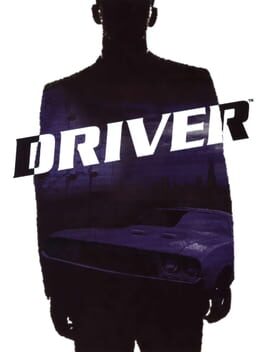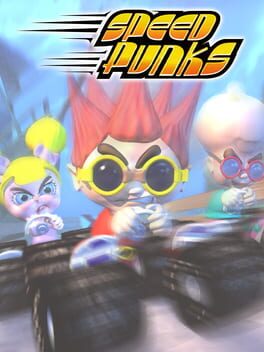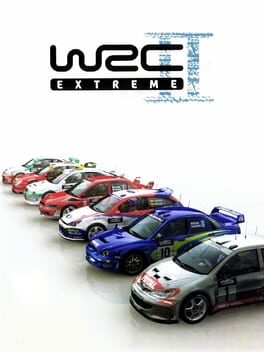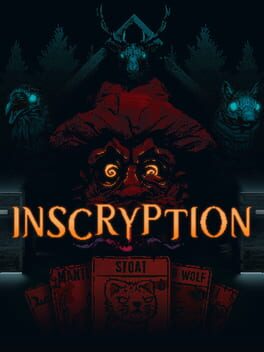KAKYBAC
1999
There is something about Driver that reminds me of a cardboard diorama. Perhaps it is all the detritus littering the back alleys, the twig-like parasols, the stickered feel to some of the shop and house textures, or even the cars themselves which seem to have a thin layer of paper taped around some sort of firm but dentable filler. Florist foam blocks are my choice! It is particularly present when crashing. In lieu of modern day baked-in Unreal engine particle effects, the cars you crash into in Driver give off car-body coloured thin triangles; like pieces of grated cardboard.
As a child, the world and cities of Driver enchanted me. They had a very certain feeling that was unique to them. Bump up a small kerb and you would hear a gentle "thum-omP" sort of sound. Then you had the sun of Driver. Even brought up on the blue sky arcadia of Sega, nothing still quite compares to the sun baked streets of Miami; the games heavily marketed opening city. The vibes were strong. And surprisingly for a relatively empty world (by modern standards), the world felt lived in, even if only by cardboard figurines!
I even remember at the time of the game's pre release demo, that the notion of having back alleys was innovative which is surreal to think about if you are exploring this game from a different generation. Back alleys. A place to place destructible assets so it felt cool to plow through during a chase. Or a narrative tactic to make the cities feel ever slightly more real. I also remember that the back alleys in Driver were also kind of sparse and that the one they had right next to the demo area definitely felt cherry picked. Back alleys as a selling point! I remember feeling giddy many years later when GTA4 had back alleys galore all over its realistic feeling New York map. The map designer learnt it here first.
Learning the cities then became a sort of meta game, not only knowing where the back alleys are, but also tacitly understanding to always take the freeway in Miami as opposed to the narrow one-lane roads as to best avoid police blockades. Gaining 'the knowledge' of these desperate cities immersed you tightly into the character of a criminally employed driver. The different cities this game's veritable lava world, ice world and dungeon world, each with fully exaggerated gameplay differences to explore and learn.
Talking of gameplay, Driver is ostensibly an old school experience. When involved in an early chase of a monorail, you will be surprised at the constant "she got away" fail state even after just pulling out of your apartment and not following the invisible, most efficient driving line. With these failures, your mind is oddly cast forward to the same development company's Stuntman series. Some of the missions in Driver really feel like movie sets with a strict set of directorial buffers and constraints. A poetic rehearsal for a later game indeed. In all, the game hooks you into its way of thinking; to always drive fast, not mind the felony ratings (for the mission timers are too strict to slowball) and to always best utilise your 'knowledge', even if that knowledge is gained on your 23rd restart of a mission.
And because of the baked in difficulty, Driver has a timeless, old school-lean feel. It rarely gets old on you too, just frustrating. Even its stingy later missions or survival mode mini-game just adds to a feeling of a bombastic game of car-based asteroids. An eternal crashing of cardboard upon cardboard.
As a child, the world and cities of Driver enchanted me. They had a very certain feeling that was unique to them. Bump up a small kerb and you would hear a gentle "thum-omP" sort of sound. Then you had the sun of Driver. Even brought up on the blue sky arcadia of Sega, nothing still quite compares to the sun baked streets of Miami; the games heavily marketed opening city. The vibes were strong. And surprisingly for a relatively empty world (by modern standards), the world felt lived in, even if only by cardboard figurines!
I even remember at the time of the game's pre release demo, that the notion of having back alleys was innovative which is surreal to think about if you are exploring this game from a different generation. Back alleys. A place to place destructible assets so it felt cool to plow through during a chase. Or a narrative tactic to make the cities feel ever slightly more real. I also remember that the back alleys in Driver were also kind of sparse and that the one they had right next to the demo area definitely felt cherry picked. Back alleys as a selling point! I remember feeling giddy many years later when GTA4 had back alleys galore all over its realistic feeling New York map. The map designer learnt it here first.
Learning the cities then became a sort of meta game, not only knowing where the back alleys are, but also tacitly understanding to always take the freeway in Miami as opposed to the narrow one-lane roads as to best avoid police blockades. Gaining 'the knowledge' of these desperate cities immersed you tightly into the character of a criminally employed driver. The different cities this game's veritable lava world, ice world and dungeon world, each with fully exaggerated gameplay differences to explore and learn.
Talking of gameplay, Driver is ostensibly an old school experience. When involved in an early chase of a monorail, you will be surprised at the constant "she got away" fail state even after just pulling out of your apartment and not following the invisible, most efficient driving line. With these failures, your mind is oddly cast forward to the same development company's Stuntman series. Some of the missions in Driver really feel like movie sets with a strict set of directorial buffers and constraints. A poetic rehearsal for a later game indeed. In all, the game hooks you into its way of thinking; to always drive fast, not mind the felony ratings (for the mission timers are too strict to slowball) and to always best utilise your 'knowledge', even if that knowledge is gained on your 23rd restart of a mission.
And because of the baked in difficulty, Driver has a timeless, old school-lean feel. It rarely gets old on you too, just frustrating. Even its stingy later missions or survival mode mini-game just adds to a feeling of a bombastic game of car-based asteroids. An eternal crashing of cardboard upon cardboard.
2000
// Known as 'Speed Freaks' in UK //
A classic blockbuster rental this game. A game to rinse over the weekend and maybe have a blast on its 4 player split screen mode if you get some mates round. Come Sunday hand-in, you won't feel bad about the loss but suitability satiated by a solid kart racing experience.
I cannot help but feel this was internally pitched as 'Rayman Karting' giving the lack of limbs of our cutesy racers. It may have been rejected from this license but there is a good game here. Tires seem to touch the track as you course over various surfaces in a tactile way. Each track is colourful and flavourful enough too; and the pleasing sound when using the boost seems nestled into my childhood cupboard of memorable sounds. "vvvpppvvvpppffff..."?
What is there to say really, it is all above board and good, and perhaps only lacking an aforementioned license or gimmick to really set it apart. The sound effects, the characters, the weapon pick ups all feel polished and primed to deliver fun. Back then, that's all a game needed to be I guess.
A classic blockbuster rental this game. A game to rinse over the weekend and maybe have a blast on its 4 player split screen mode if you get some mates round. Come Sunday hand-in, you won't feel bad about the loss but suitability satiated by a solid kart racing experience.
I cannot help but feel this was internally pitched as 'Rayman Karting' giving the lack of limbs of our cutesy racers. It may have been rejected from this license but there is a good game here. Tires seem to touch the track as you course over various surfaces in a tactile way. Each track is colourful and flavourful enough too; and the pleasing sound when using the boost seems nestled into my childhood cupboard of memorable sounds. "vvvpppvvvpppffff..."?
What is there to say really, it is all above board and good, and perhaps only lacking an aforementioned license or gimmick to really set it apart. The sound effects, the characters, the weapon pick ups all feel polished and primed to deliver fun. Back then, that's all a game needed to be I guess.
2002
The roads are way too wide. I know they used satellite imagery but I think that is to the game's detriment as the geographical ratios feel all out of whack. It is just way too easy to hold X and throw yourself into corners with abandon; all of the rubble areas and slants are incredibly forgiving and it just robs the experience of tension. Even if the time checks were more competitive the game would still lack an inherent sense of pressure; the baseline driving is just way too easy and forgiving. It never feels like you are battling against the environment to hold onto the track.
Such a shame as I really like the presentation and use of real-life courses. I doubt they are this easy to jaunt through though.
Such a shame as I really like the presentation and use of real-life courses. I doubt they are this easy to jaunt through though.
2021
A found footage game? hhhmm. I am not so sure if that works for me. It feels one step removed from the more understood found footage film. Of course, 'Let’s play' commentators and Twitch streamers are prevalent but I think you have to pretend a little to be fully persuaded of the captured footage motif. It is ‘you’ controlling the avatar and the game doesn’t really resolve that other than jazzing out to the tune of a meta fiction. When Luke calls out with a great play or comments on a bad beat, the meta theme does come back into an enjoyable focus but it never feels all encompassing.
Nevertheless, what this meta fiction allows the design team to do is to infuse a whole lot of expectation of the unknown. After your first dose of acted out footage you begin to wonder just what else can happen. The width and limits of the game are drawn open and experiencing that is a wonder. From building your own boss battle, to creating your own cards, it fully deserves its Seamus McNally prize and all of its plaudits.
So where do I stand then? Well, I come at the game as a tabletop game developer and it was through Inscryption’s tabletop card game roots which drew me in. Taken as a simple, rogue like deck builder. It is brilliant. I would love a physical version, that, indeed, somehow also incorporated the game’s get-up-out-of-your-seat mechanisms. And then creating a new card from scratch after each of your failed runs? It would be ingenuous in the tabletop space. A legacy game plus. That the game goes further and beyond this initial remit not only breaks through the forth wall in a novel way, but it also breaks down the expectations of genre or even, if you were to feel so lofty, interactive entertainment. The notion that a game can become anything else, another genre or even medium? It maybe does not quite hit the landing but the choice of its gymnast's trick is to be applauded.
One moment of greatness the game did achieve was in reading my Playstation Network friends list and creating enemy cards based off of them for me to compete against. That it populated the other side of the board with cards baring the name of a dead friend’s inactive username was startling and beautiful. A ghost in the machine. One last game against my friend. That I then immediately lost that duel due to my friends overpowered "cheating" cards was joyous and wonderful. He was often a person of wry playfulness and would happily cheat in a friendly way if it brought laughter. Art reflecting life, or was it rather life reflecting onto art...
For this, Inscryption will be eternally inscribed into my internal hall of fame almost regardless of my thoughts on the matter. I have been photographed and captured.
Nevertheless, what this meta fiction allows the design team to do is to infuse a whole lot of expectation of the unknown. After your first dose of acted out footage you begin to wonder just what else can happen. The width and limits of the game are drawn open and experiencing that is a wonder. From building your own boss battle, to creating your own cards, it fully deserves its Seamus McNally prize and all of its plaudits.
So where do I stand then? Well, I come at the game as a tabletop game developer and it was through Inscryption’s tabletop card game roots which drew me in. Taken as a simple, rogue like deck builder. It is brilliant. I would love a physical version, that, indeed, somehow also incorporated the game’s get-up-out-of-your-seat mechanisms. And then creating a new card from scratch after each of your failed runs? It would be ingenuous in the tabletop space. A legacy game plus. That the game goes further and beyond this initial remit not only breaks through the forth wall in a novel way, but it also breaks down the expectations of genre or even, if you were to feel so lofty, interactive entertainment. The notion that a game can become anything else, another genre or even medium? It maybe does not quite hit the landing but the choice of its gymnast's trick is to be applauded.
One moment of greatness the game did achieve was in reading my Playstation Network friends list and creating enemy cards based off of them for me to compete against. That it populated the other side of the board with cards baring the name of a dead friend’s inactive username was startling and beautiful. A ghost in the machine. One last game against my friend. That I then immediately lost that duel due to my friends overpowered "cheating" cards was joyous and wonderful. He was often a person of wry playfulness and would happily cheat in a friendly way if it brought laughter. Art reflecting life, or was it rather life reflecting onto art...
For this, Inscryption will be eternally inscribed into my internal hall of fame almost regardless of my thoughts on the matter. I have been photographed and captured.
1997
The game feels like an extended set of lost tales from Brothers Grimm, but rather than looking back from a contemporary viewpoint with academic classifications, the game creates a palpable sensation of actually living in the midst of a dour and disturbing world.
The atmosphere is so dark and evocative; you really get to know the inhabitants of this small village. You like them and you hope for them. Even when someone dies who you barely knew, it still feels like a loss in how the death reverberates around the village. You even hear that the person who is lodging you had a big loss in their life too. It is sad to hear and colours your interaction with them. The atmosphere of loss is both central and a constant peripheral figure in the experience. The village itself feels surrounded on all sides by apprehension and darkness. Akin to medieval fairy tales, which liked to paint the outside world "beyond the village" with foreboding dread, Alundra succeeds to double down on this ambience. That the area is beset by some sort of demonic figure further underlines this sense of a lost fable.
Any joy that you do find, like a tavern, a gilded falcon or some children playing, is beautifully juxtaposed against all of this dark atmosphere. Like any good fairy tale, it signifies and works to remind us of the joys and perils of our life.
On a ludic footing, the game is even stronger. Each of the game's puzzle dungeons are unendingly clever, meticulously designed and palpably rewarding. The rush of figuring out a tough one (of which there are many) never gets old. You can almost sense the clever mind of the designer wryly setting the traps and switches in place. Pleased. And not in a immersion breaking sense, more so in a warming and philosophical sense. That the designer of a certain puzzle, may actually be dead (circa 2023), and yet the ghost of their design lives on in eternity. In Alundric form.
Indeed, playing a game from 1997 (and no doubt worked upon years prior) came with its own unique wistful emotions. In such a young industry, the notion of developer death has rarely been explored by others or myself before. In another 25 years, we can almost be certain that most if not all developers of Alundra may be dead. It is shocking and bleak to think about. And yet the game persists. Its puzzles always ready and in place for the next Releaser. Alundra is a game which can make you think about this. Not only for its theming of villager death that persists all around you, but because many of its puzzles feel so personal. They all feel created by a happy human who had an "aha" moment. And when that "aha" moment dawns within you, it is like a torch has been passed and set within you, as you grasp the exact same thing the puzzle designer did. A flicker to the past...
For this, Alundra is not only a great action, adventure game, it is a great adventure through the past. Of someone's meticulously placed traps, their wry switches and cheeky timings. Of their hints, their ingenuity, their clever use of assets and their fairhanded safety nets.
Akin to any medieval folk tale which works to give us a glimmer into the past, no matter how bleak or dark; Alundra achieves this and becomes gaming's ultimate, playable folk tale.
The atmosphere is so dark and evocative; you really get to know the inhabitants of this small village. You like them and you hope for them. Even when someone dies who you barely knew, it still feels like a loss in how the death reverberates around the village. You even hear that the person who is lodging you had a big loss in their life too. It is sad to hear and colours your interaction with them. The atmosphere of loss is both central and a constant peripheral figure in the experience. The village itself feels surrounded on all sides by apprehension and darkness. Akin to medieval fairy tales, which liked to paint the outside world "beyond the village" with foreboding dread, Alundra succeeds to double down on this ambience. That the area is beset by some sort of demonic figure further underlines this sense of a lost fable.
Any joy that you do find, like a tavern, a gilded falcon or some children playing, is beautifully juxtaposed against all of this dark atmosphere. Like any good fairy tale, it signifies and works to remind us of the joys and perils of our life.
On a ludic footing, the game is even stronger. Each of the game's puzzle dungeons are unendingly clever, meticulously designed and palpably rewarding. The rush of figuring out a tough one (of which there are many) never gets old. You can almost sense the clever mind of the designer wryly setting the traps and switches in place. Pleased. And not in a immersion breaking sense, more so in a warming and philosophical sense. That the designer of a certain puzzle, may actually be dead (circa 2023), and yet the ghost of their design lives on in eternity. In Alundric form.
Indeed, playing a game from 1997 (and no doubt worked upon years prior) came with its own unique wistful emotions. In such a young industry, the notion of developer death has rarely been explored by others or myself before. In another 25 years, we can almost be certain that most if not all developers of Alundra may be dead. It is shocking and bleak to think about. And yet the game persists. Its puzzles always ready and in place for the next Releaser. Alundra is a game which can make you think about this. Not only for its theming of villager death that persists all around you, but because many of its puzzles feel so personal. They all feel created by a happy human who had an "aha" moment. And when that "aha" moment dawns within you, it is like a torch has been passed and set within you, as you grasp the exact same thing the puzzle designer did. A flicker to the past...
For this, Alundra is not only a great action, adventure game, it is a great adventure through the past. Of someone's meticulously placed traps, their wry switches and cheeky timings. Of their hints, their ingenuity, their clever use of assets and their fairhanded safety nets.
Akin to any medieval folk tale which works to give us a glimmer into the past, no matter how bleak or dark; Alundra achieves this and becomes gaming's ultimate, playable folk tale.




